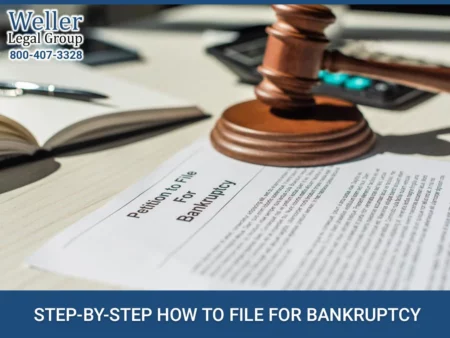 The U.S. Bankruptcy Code is a federal statute governing filing bankruptcy. This is done to ensure that the process is similar in the nation’s 90 federal bankruptcy courts. However, local variations and the uniqueness of each case still make this only a general outline which is why you should really hire a bankruptcy attorney. Nevertheless, here’s an outline of the process steps.
The U.S. Bankruptcy Code is a federal statute governing filing bankruptcy. This is done to ensure that the process is similar in the nation’s 90 federal bankruptcy courts. However, local variations and the uniqueness of each case still make this only a general outline which is why you should really hire a bankruptcy attorney. Nevertheless, here’s an outline of the process steps.
Choose Which Type of Bankruptcy to File For
There are a few different types of bankruptcy that you can apply for, each of which a bankruptcy attorney can easily explain to you. However, here’s a basic overview of what they are:
- Chapter 7 is the most common type. Here you’ll voluntarily turn over your assets to the bankruptcy court. They’ll then spend the next several months selling them so that they can use the money to pay off your creditors. In each state, some assets are exempt. These may include things like cars, pensions, clothing, and home goods. While you may think that filing bankruptcy here is great, you’ll have to pass a Means Test in order to do so. This is to ensure that your income for the past 6 months is less than your state’s median.
- Chapter 13 bankruptcy requires you to create a repayment plan through which you repay your creditors. Therefore, it’s more complicated and will last 3 – 5 years.
Complete the Credit Counseling Course
This $50 course is required within 180 days of filing bankruptcy. It must be through a government-approved organization. It’s meant to help you decide whether bankruptcy is right for you. There’s also another course you’ll need to take before being discharged to teach you how to budget properly.
Complete Court-Required Forms
There are a lot of forms that need to be filled out, which is why many people opt to hire a bankruptcy attorney. All these forms can be downloaded from the U.S. Court’s website. Make sure that you read the instructions, and their details, carefully so that you properly fill everything out and don’t have your case rejected.
Pay Court Fees
Once your forms are completed, you’ll also need to pay some court fees (the basic filing fee, a $75 administrative fee, a $15 trustee surcharge, certifying documents, getting copies, etc.) when filing for bankruptcy. These fees are waived if your income is less than 150% of the poverty level.
Filing Bankruptcy Forms with the Court
This is another part of the bankruptcy process where it’s very helpful to have a bankruptcy attorney. This is because you’ll need to go to your local courthouse to file all your forms. Since the clerks aren’t there to provide you with legal help (that’s what a bankruptcy attorney is for), you’ll want to make sure that your forms are filled out correctly before going. Once your forms are filed and accepted, the court will appoint a Trustee to your case. They’re responsible for overseeing your case and will communicate with you through the mail.
Meet with Your Creditors
Although you may not need to appear in court, you’ll still need to attend a 341 Meeting (a meeting with your creditors in which your bankruptcy attorney, if you have one, can serve as your representative). This is an opportunity for your Trustee and creditors to ask you financial questions.
Don’t Be Afraid to Ask for Help When Filing Bankruptcy
None of this is over until you follow each step properly and receive your letter of discharge. If all of this sounds like a complex, time-consuming process, you’re right. That’s why we’re here for you at the Weller Legal Group in Clearwater, FL. Reach out to us, and let us take care of everything for you.
Picture Credit: VistaCreate

